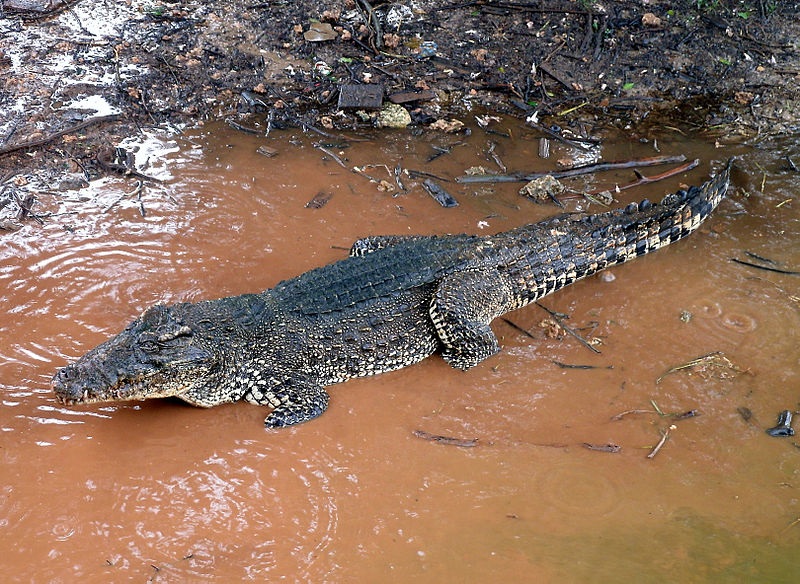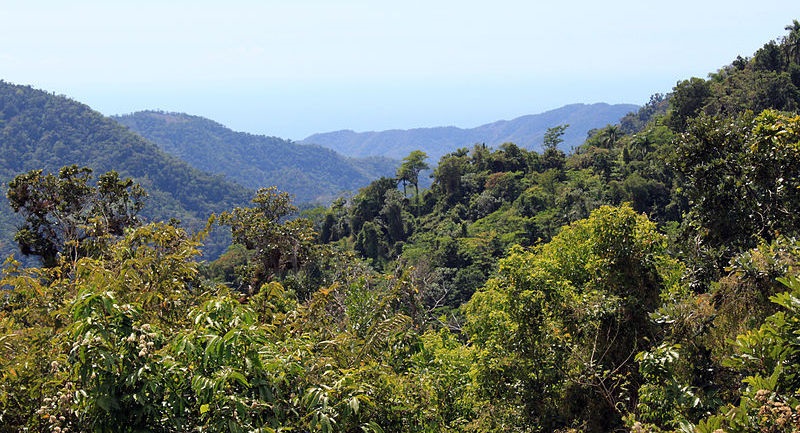Cuba is the largest island in the Caribbean (110,860 km2) and only slightly smaller in land area (including all the offshore cays) than England. The population is just over 11 million people of which almost a third live in the capital, Havana.
It is the most biologically diverse island in the Caribbean with many unique species, especially birds. It has some still completely unspoiled reefs and the marine life is also diverse and interesting; notably a reef shark and the Goliath Grouper. The waters attract many cetacean species and are also home to a small manatee population and a monk seal species.
There are a number of reptiles with the Cuban crocodile still inhabiting the swamplands as well as a caiman and the American crocodile. A number of turtles include several sea species which nest on the beaches. Over forty snake species are extant with the Cuban boa being the largest and more than a hundred lizard species. There are two as many frogs and toads. A species of bright orange land crab spawns in the see and the nearby areas can be a mass of crabs when the come to spawn.

Hundreds of colourful butterflies can still be found with many species endemic bringing great interest to those of an entomological bent.
Cuba is also well endowed with rodents, shrews and bats, but no large land mammals or carnivores.
The political stability that has marked the years since the revolution in 1959 has not been matched by the economy, which has suffered for a variety of reasons. The financial benefits of tourism have been widely embraced in the last 15 years or so, which has resulted in improved facilities for visitors and many of these are near to popular birding hotspots. Cubans are a warm and friendly people and visiting birders are unlikely to experience any problems. Crime, especially violent crime, is virtually unknown.
Cuba has a wide variety of habitats from coastal mangrove to montain cloud forest and including important man-made habitats such as rice fields. Four main mountain ranges dominate an otherwise lowland landscape of arid scrub, savannah, and forest, with extensive wetlands found on the Zapata peninsula and in the Cauto River delta. Forest can be divided into several different types including lowland and montane rain forest, cloud forest, and drier seasonal (deciduous) forest, which was once very widespread in the lowlands. Coniferous forest is restricted to the eastern and western ends of the island where it is the dominant vegetation type.
Recent survey work has revealed that, as well as being significant for restricted-range birds, Cuban forests are extremely important wintering areas for Nearctic breeding species, equal to the richest sites that have been surveyed elsewhere in the Caribbean and Mexico.
Conservation
Cuba has developed a system of protected areas in a variety of habitats across the country. These have various designations and levels of protection – some 12% of the total land area falls within the 200 or so conservation units. The most important have international designations including six Ramsar sites and six Biosphere reserves. BirdLife recognises 28 Important Bird Areas (IBA) within the whole territory of Cuba, which is an Endemic Bird Area (EBA) in itself.
However, much of Cuba’s native vegetation has been converted to cultivation and pasture for cattle over the past 200 years, with only 15-20% of land remaining in its natural state. Today, expansion of cacao, coffee and tobacco production are serious threats to rain forest, while logging, charcoal production and slash-and-burn agriculture are destroying dry forest. Tourist facilities have sometimes been located inappropriately and extensions to rice and bean growing areas have impinged on important wetlands, including mangrove fringes.
Birds and birding

Around 370 species have been reported from Cuba with a high level of endemism (28 species) and a number of Caribbean specialties. Six of the endemic species are listed as ‘restricted range’ by BirdLife whilst a further 14 are designated Critically Endangered, Endangered, Vulnerable or Near Threatened. A further 19 species under these criteria have been recorded from Cuba, such as the Piping Plover, which is a relatively uncommon winter visitor to the archipelago.
Having said that, it is not too difficult to plan a birding trip to see the majority of the endemic birds, the exceptions being Cuban Kite (far to the east, largely inaccessible and almost extinct) and Zapata Rail (Critically Endangered and largely invisible). To find Cuban Martin, which is known to breed only in Cuba, and Antillean Nighthawk, both of which presumably winter somewhere in South America, you need to visit in summer, preferably from mid March or even mid April, respectively. Note that most birders will probably also want to avoid the summer (after May) and the hurricane season, which ends in late November, although the latter month can be excellent for passage migrants. Winter is excellent to see the largest numbers of individual Nearctic migrants, although a visit during either spring or autumn passage has the potential to ‘net’ more species.

There are quite considerable distances to cover just to reach the four main sites starting from Havana – in general, there are more birds in the western half of the country, more of the endemics and more facilities for the tourist. A trip of nine or ten days is the minimum needed to ensure covering the main sites but even in this time you run the risk of missing out on some species, with two weeks being the ideal length of a trip and less taxing!
Cayo Coco (Map) This is a cay off the north coast of Cuba, now linked to the mainland by a causeway some 17 km long. The island has been developed as an all-inclusive beach tourism destination but large areas are still unspoilt and home to some interesting species. Of the endemics, there is Cuban Gnatcatcher and Oriente Warbler that you must see. In addition there are some interesting species found nowhere else in Cuba such as Bahama Mockingbird and Thick-billed Vireo. There is a race of Cuban Sparrow here as well as Gundlach’s Hawk and its position means that migrant falls are relatively common.
Cuchillas del Toa – Guantanamo Province (Map)
Oriente – The last place that Ivory-billed Woodpecker and Cuban Kite were seen. Mountain and river birds.
Najasa, Camaguey (Map)
An area of open savannah and woodlands to the southeast of Camaguey city which encompasses the reserve at La Belen. There are 15 of the endemics to found here but it is the only place to find the Cuban Palm Crow and much the easiest place to see Giant Kingbird, Cuban Parakeet and the near-threatened Caribbean speciality, Plain Pigeon.
Topes de Collantes – Escambray-Sancti Spiritus Province (Map)
Mountain birds. Endemic birds found here include Cuban Tody, Cuban Trogon and Cuban Emerald.
Vinales Valley-La Guira (Map)
This area to the west of Havana is largely pine-forested limestone hills interspersed with low-level agriculture. This is the place to find the Cuban Solitaire and now is also the easiest place to find Cuban Grassquit. Many other endemics are here and it is a good starting point for any birding trip to Cuba to get to grips with the commoner species.

Zapata Swamp – Matanzas Province (Map)
A huge area (over half a million hectares) this is the largest wetland in the Caribbean. It has extensive cave lake systems with spectacular blue holes, flooded caves and important water resources. There is also critical habitat in the form of forest, flooded palm savannahs, open water and salinas, reefs and mangroves. It is simply the best birding in Cuba and the following endemics can be found there: Gundlach’s Hawk, Zapata Rail, Grey-fronted Quail-dove, Blue-headed Quail-dove, Cuban Parakeet, Bare-legged Owl, Cuban Pygmy-owl, Cuban Nightjar, Bee Hummingbird, Cuban Trogon, Cuban Tody, Cuban Green Woodpecker, Fernandina’s Flicker, Giant Kingbird, Cuban Vireo, Cuban Crow, Zapata Wren, Yellow-headed Warbler, Cuban Blackbird, Red-shouldered Blackbird, Cuban Sparrow, Cuban Grassquit.
Major Source: Fatbirder
Map Source: Googlemaps™
Photo Source: ©Wikimedia Commons or Birding Ecotours
